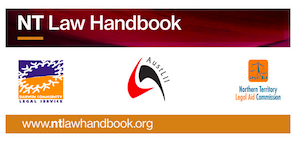-- JonathanMo - 14 Sep 2015
However, placing the symbol on a work does not itself create any copyright if none already existed.
What does Copyright Protect?
Copyright gives authors and creators legal protection for the following types of work:- literary works (for example, books, film scripts, articles; poems; short stories; lyrics; instruction manuals; compilations; advertising copy; journalism, and all other forms of writing except trivia words, names and slogans, and even private correspondence) [CA s.32]
- dramatic and musical works (for example, plays and music compositions in the form of musical notation, film scripts; screenplays; scenarios; choreography, or any other work created for the purposes of performance) [CA ss.10, 32]
- artistic works and works of applied art (for example, paintings, drawings, ceramics, craftworks, carvings, sculptures) [CA s.10]
- maps, building plans and technical drawings
- photographic works
- motion pictures(for example, movies, documentaries, and interviews, visual images and sounds, such as those in a film or video, are protected separately from any copyright that may subsist in works recorded on a film or video, such as a screenplay, a novel on which the work is based, a photograph, painting or music contained in it [CA Pt IV s.86]
- computer programs and databases [CA s.10]
- sound recordings: including records, tapes and compact discs. Sound recordings are protected independent of any underlying works, such as a musical or literary work embodied in the recording. [CA s.85]
- electronic and online communications (including the internet) [CA s.31(1)]. 'Communicate' is defined in the CA to mean make available online or electronically transmit
- published editions: the typesetting and typographical arrangement of a published work that is separate from any copyright existing in the literary, dramatic, artistic or musical work it contains [CA s.88].
'Neighbouring rights'
Sometimes the term 'neighbouring right' appears in respect of descriptions or commentaries on copyright. There are three types of 'neighbouring rights', namely:- the rights of performing artists in their performances
- the rights of producers of phonograms in their phonograms
- the rights of broadcasting organisations in their radio and television programs.
Registration formalities
There are no formal registration requirements for obtaining copyright protection. Provided the requirements set down in the CA are met, copyright exists in a work. There is no need to sign the work or register it with anyone to get copyright protection. A creator of an original work is entitled, but not obliged, to place the internationally recognised copyright symbol © on their work, along with the name of the copyright holder and the year of creation or first publication. Failure to do so does not reduce a creator's legal rights. It is nevertheless a good idea to put the international copyright symbol on all copies of a work as a reminder to others. A typical addition is:© John Smith 2008.
 Copyright © by the contributing authors. All material on this collaboration platform is the property of the contributing authors.
Copyright © by the contributing authors. All material on this collaboration platform is the property of the contributing authors. Ideas, requests, problems regarding AustLII Communities? Send feedback
This website is using cookies. More info.
That's Fine

